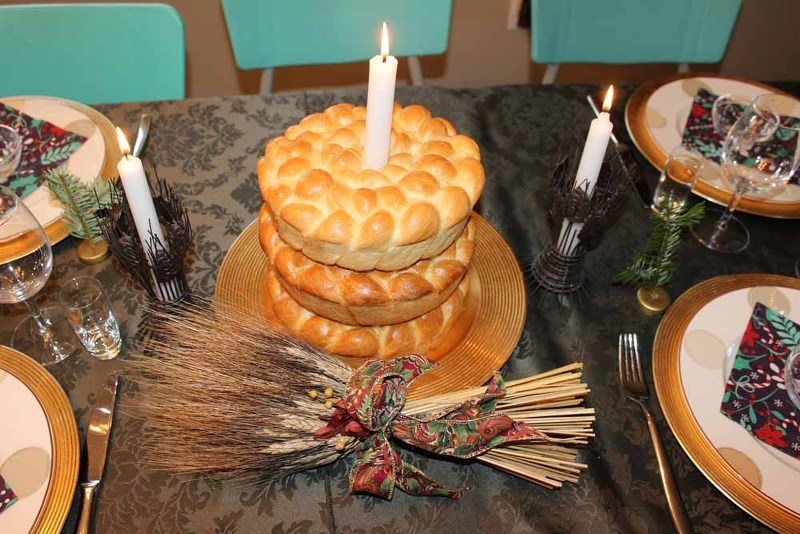By Jan. 6, a large facet of society has already taken down the Christmas tree and stored the decorations safely away in storage. For those of the Ukrainian Orthodox faith, however, the celebration is just getting started.
“We still, technically, celebrate on the 25th, because today is the 24th, according to our calendar,” said Father Peter Haugen, who sat comfortably on his living room couch on Jan. 6, surrounded by family, waiting for the first star to appear in the dimming sky.
“For us, this is Christmas.”
The sighting of the first star marks the beginning of their 12-course, meatless feast, which is done each year on the Eve of the Nativity, which, according to the Julian calendar, falls on Jan. 6.
“The reason we have the meatless dinner is because, technically, we are ending a fast,” Haugen said.
So does the Haugen family also celebrate on the modern day Dec. 25?
“Not church-wise, not theologically. We have no services for it,” Haugen said. “As a family, we all do, just because we grew up in Canada, and it’s kind of hard not to celebrate it with everyone else.”
This splitting of the calendar puts them in a unique position when it comes to understanding and honouring the dual nature of the holiday.
“For us it’s actually kind of easy,” Haugen said. “The 25th becomes more about presents and about Santa, and the seventh becomes truly what it’s about – the birth of Christ, and the celebration of that. It’s a nice way of differentiating between the two.”
The table was already set as they were readying to make the final preparations to the food on the afternoon of Jan. 6 – with one extra seat positioned at the end of the row.
“We always have an empty place setting to remember our departed loved ones,” Haugen said. “It’s also for the weary traveller – if anyone on the Eve of Christmas needs a dinner, there’s always a spot for them.”
Many traditional dishes are still enjoyed during the annual feast, including Kutia (boiled wheat mixed with poppy seeds and honey), Borscht (beet soup), Varenyky (perogies), and Holubtsi (cabbage rolls).
The meal is one way for Haugen and his family to stay connected to their roots.
“I think it’s incredibly important. It links us to a lot of our ancestry that I think otherwise is easily forgotten,” Haugen said. “Even my boys growing up, I’m sure will identify themselves as Ukrainian, just because of the traditions that we hold – even without having ever stepped on Ukrainian land.”
The feast on Jan. 6 serves as the starting point for a string of revelry that lasts until they hit another milestone of their faith.
“This just starts the celebration. We go out carolling, we go to our parishioners doors, and we celebrate all the way until the baptism, which is the 19th of January,” Haugen said.
It’s a time-honoured tradition, and one that Haugen plans to keep celebrating as the years roll forward.
“Who doesn’t want two Christmases?”



